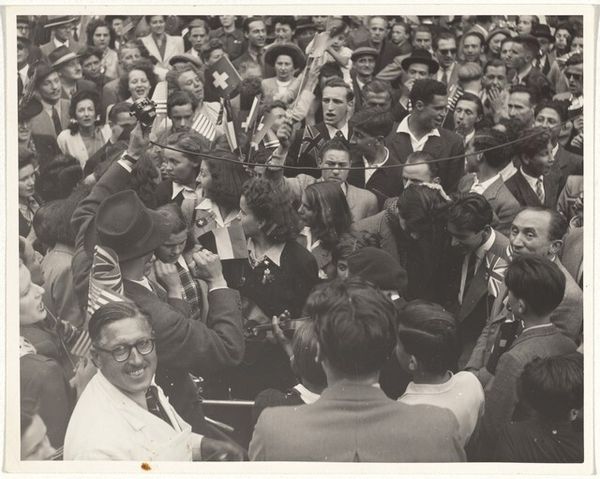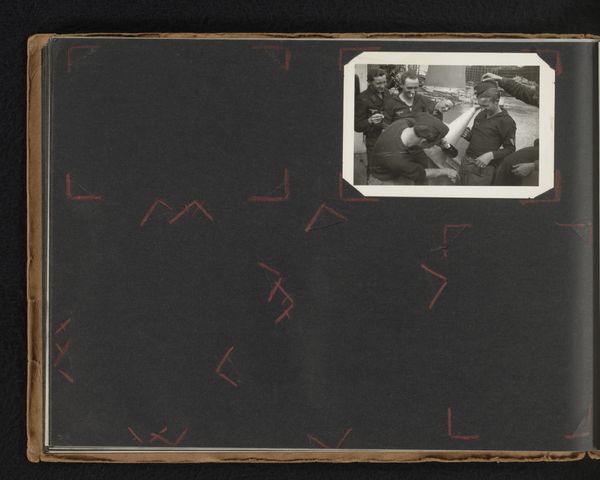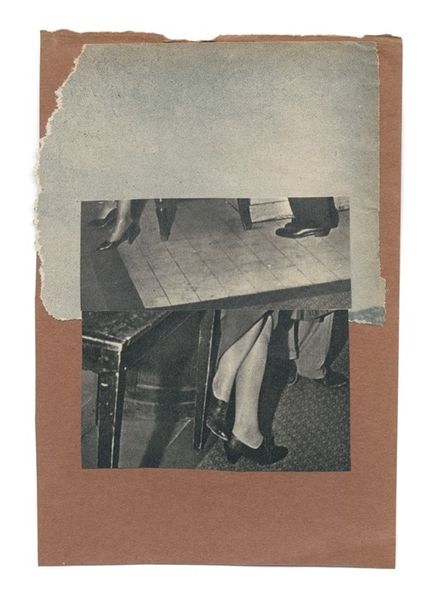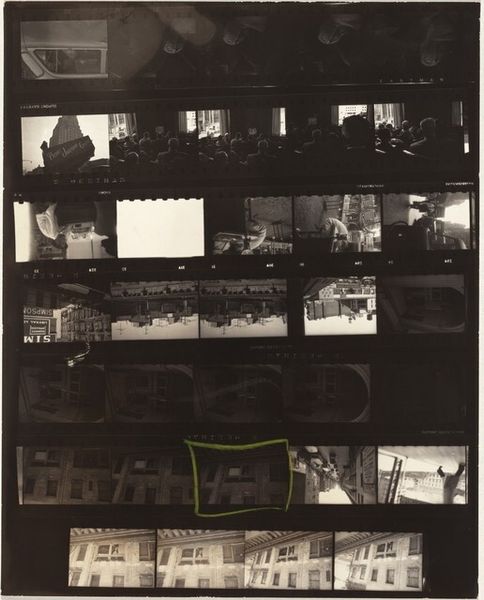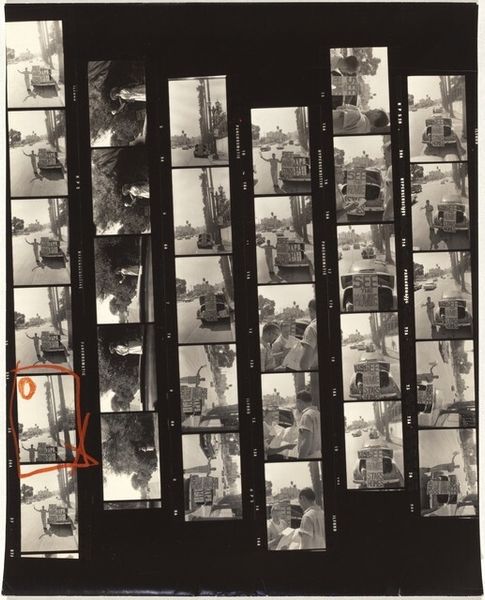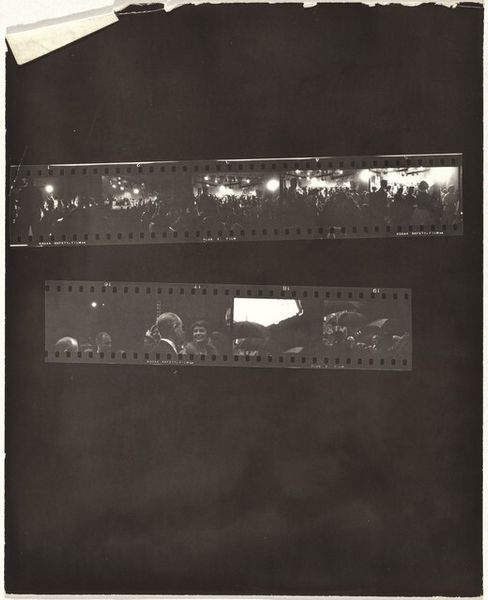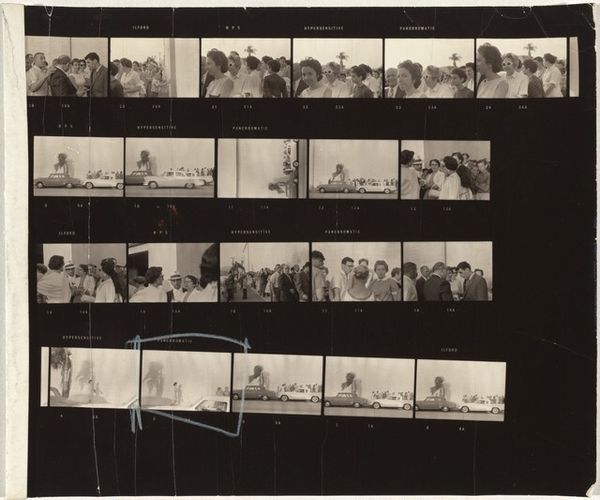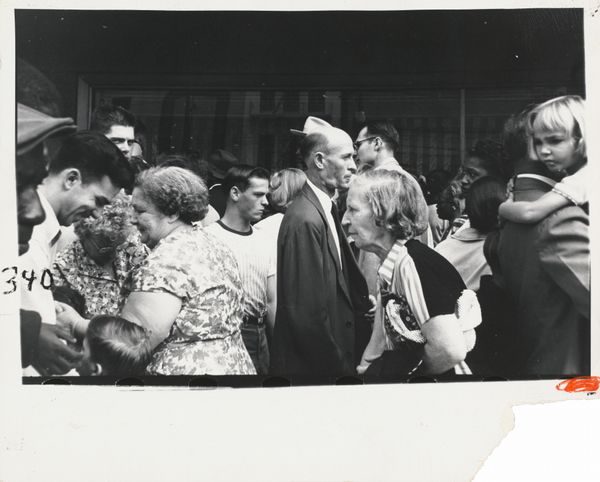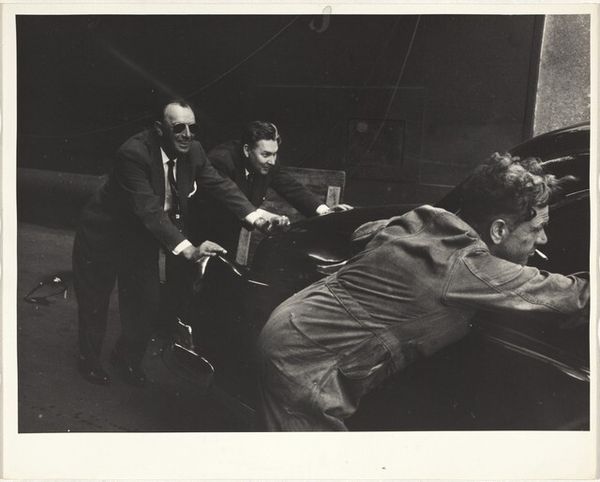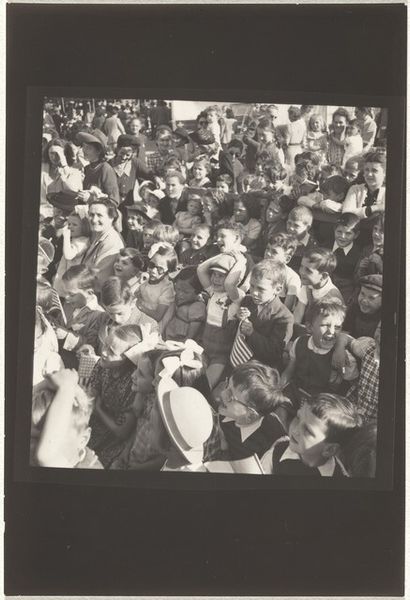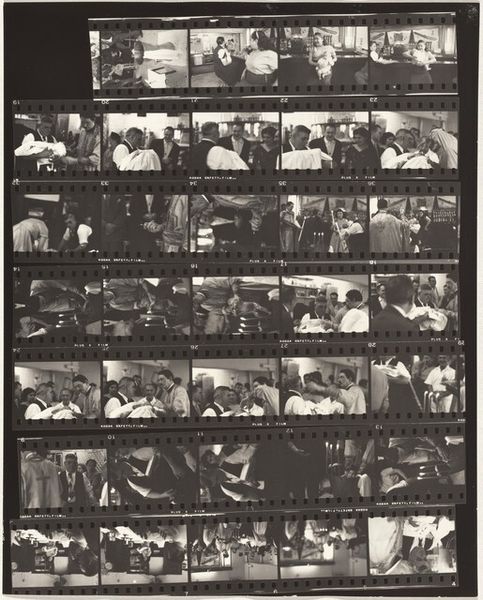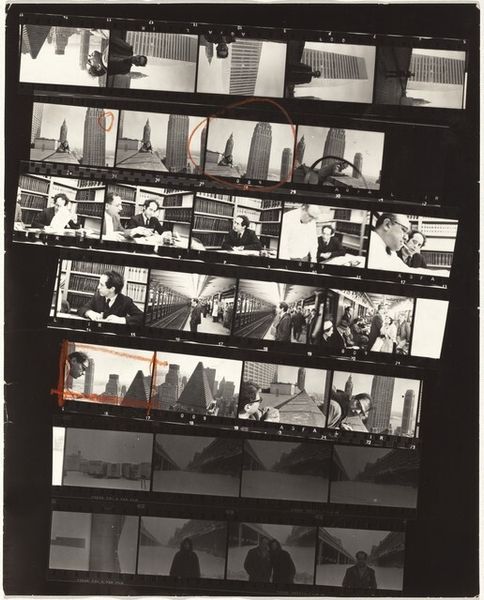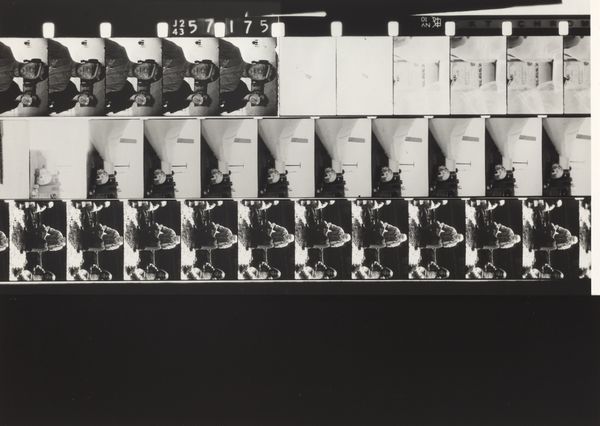
print, photography, gelatin-silver-print
#
portrait
#
print photography
# print
#
social-realism
#
street-photography
#
photography
#
historical photography
#
group-portraits
#
gelatin-silver-print
#
pop-art
#
modernism
#
realism
Dimensions: image: 16.7 x 23.9 cm (6 9/16 x 9 7/16 in.) sheet: 20.2 x 25.2 cm (7 15/16 x 9 15/16 in.)
Copyright: National Gallery of Art: CC0 1.0
Editor: So, this is Robert Frank's "Convention Hall—Chicago," a gelatin silver print from 1956. There's this feeling of being crowded and perhaps a bit…overwhelmed, maybe by a sense of old-fashioned power. What do you see when you look at this photograph? Curator: I see a constellation of symbols relating to mid-century American power. The cigar, for example, is front and center. Think about the weight it carries: affluence, dominance, a very particular brand of masculinity. And the faces pressed together—what do you notice about them? Editor: There are a lot of white men. And they seem so serious, almost…imposing. Curator: Exactly. Now, consider the year, 1956. This was a time of great social conformity but also simmering discontent. The composition, with the backs of heads obscuring the foreground, almost implies a closed-door meeting. How does that visual exclusion resonate, culturally? Editor: It feels exclusionary. Like we're not meant to be a part of it, that these decisions are being made elsewhere. Curator: Precisely! And notice the tape and notes adhered to the print. This itself becomes part of the narrative, a raw, unpolished truth left unhidden, unglamorous. Does that affect how you interpret the scene? Editor: It gives it a realness, an unvarnished quality. Almost like we’re seeing behind the scenes, beyond the convention hall itself. Curator: Indeed. The symbolism becomes multifaceted – a commentary not only on the event itself, but also on the processes of documentation and selection that shape our understanding of history. Editor: I never would have considered the notes and tape part of the story. That gives it so much more depth! Curator: These visual layers offer a powerful look at how images preserve not only the literal scene, but also the psychological and social undertones of the time.
Comments
No comments
Be the first to comment and join the conversation on the ultimate creative platform.

